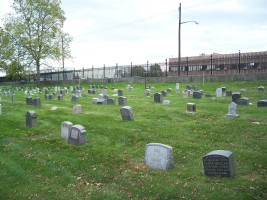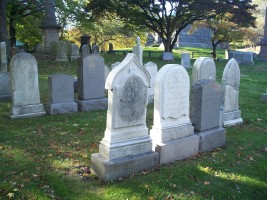Green-Wood Cemetery
Green-Wood Cemetery was founded in 1838 when this part of Brooklyn was still rural. Brooklyn social leader Henry Evelyn Pierrepoint spearheaded the formation of the cemetery, which was inspired by the naturalistic English landscape of Mount Auburn Cemetery in Cambridge, MA. The original layout for the cemetery was designed by landscape architect David Bates Douglass. The 478 acres have a varied terrain formed by glacial moraines and feature both the highest point in Brooklyn (Battle Hill) and four glacial kettle ponds. It has been a tourist destination since the mid 19th century and, as of this writing, is the final resting place of around 600,000 persons. The cemetery was designated National Historic Landmark in 2006
If you're into such things, it's a lovely way to spend a summer or autumn afternoon. This was a much coveted final resting spot in the 19th century and is, accordingly, a great historical experience just a subway ride away.
Findagrave
FindAGrave.com is a site with information on the final resting places of many famous and not-so-famous persons. People can also request photos of gravesites of their relatives, and the requests are e-mailed to folks who have signed up on the site and are located nearby the cemetery of interest. I received such a request for Green-Wood Cemetery, which lead to a list of around 20 outstanding photo requests, and to my subsequent visits.
Finding gravesites, especially old ones, can be quite a challenge since it is often difficult to get accurate location information for specific gravesites. And even when such information is available, older gravestones are often weathered beyond recognition or missing altogether.
Green-Wood Cemetery provides access to burial database information both through their website and from a kiosk in the Fifth Avenue gate house building. The kiosk computer displays and prints map sections that can lead you to the section and lot for a particular gravesite. However, the lots are rarely clearly deliniated on the ground and since some lots can be quite large and densely populated, the search for a particular grave can take awhile. And there is no assurance that a legible stone still exists for the grave. Marble stones from the late 19th and early 20th century are especially problematic since marble is porus annd almost all of them have weathered beyond recognition (unlike granite stones). They also, tragically, often represent the missing links in folks' genealogical searches.
Included here are some case studies on the some gravesite searches I did in Green-Wood Cemetery - some successful, some not.




















